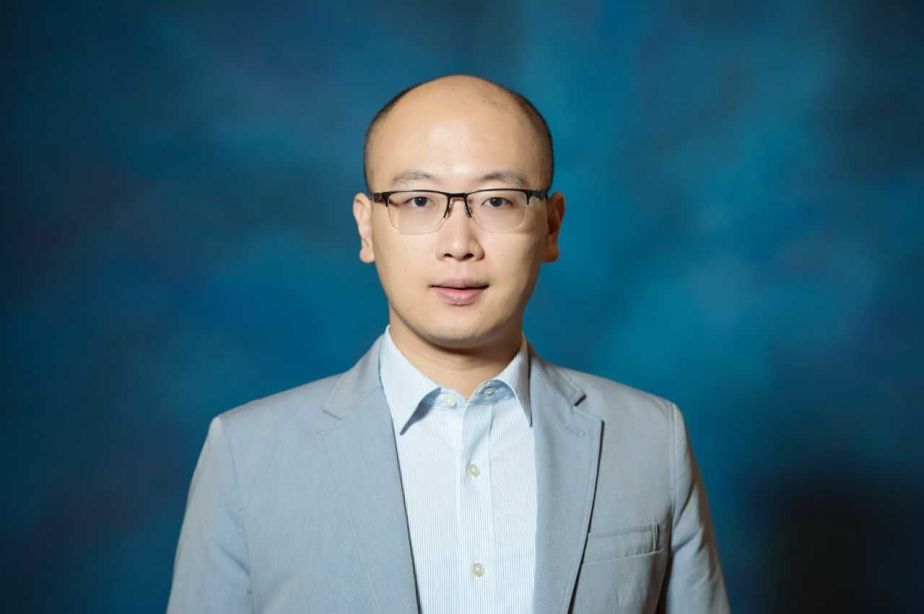 Dr. Zhaojin Zeng is a visiting assistant professor in the Department of History at the University of Pittsburgh. He completed his PhD in history at the University of Texas at Austin. As a new faculty member, Dr. Zeng began his research and teaching at Pitt in Fall 2018. We are fortunate to meet with him and have a chance to sit down and talk about his research and teaching experiences.
Dr. Zhaojin Zeng is a visiting assistant professor in the Department of History at the University of Pittsburgh. He completed his PhD in history at the University of Texas at Austin. As a new faculty member, Dr. Zeng began his research and teaching at Pitt in Fall 2018. We are fortunate to meet with him and have a chance to sit down and talk about his research and teaching experiences.
Q: Tell us about your background and what brought you to the University of Pittsburgh?
I got a bachelor’s degree of engineering in food science and technology and then because of my personal interest, I decided to pursue a doctorate in history. This decision can trace back to my undergraduate in China. At that time, I took several elective courses on Chinese History in addition to my major’s courses in food studies. The fascinating topics taught by the history professors at Shanghai Jiao Tong University (SJTU) strongly impressed me and planted the seed in my heart to explore further this field. After college, I took the next step moving toward history to pursue a two-year Master of Philosophy in Social Sciences (MPhil) at the Hong Kong University of Science and Technology. After that, I got admitted to the doctoral program in history at UT-Austin and then obtained my PhD degree in East Asian History there after the six-year study. Looking back, I will say that I am very fortunate to have an interdisciplinary background, which has laid a robust foundation for my historical research. When analyzing a historical issue or event, I always think about it from various distinctive perspectives like science, technology, and sometimes physics. My data analytics skill also helps me a lot when I conduct quantitative research.
I am very happy to join Pitt, as I know that Pitt has wealthy traditions and resources in East Asian studies and famous historians such as Prof. Cho-yun Hsu used to work here. I am sure that these will be helpful to my academic career. This semester, I am teaching two courses, Modern China and Modern East Asia Civilization. I am glad to see that both classes are fully registered, which means that a lot of students are interested in East Asian culture and history. I am currently also a faculty affiliate in the Asian Studies Center (ASC), so I also look forward to participating in the ASC’s events and contributing to our University.
Q: What research are you currently focusing on? Are you confronting any challenges?
I am writing a book on the history of Chinese industrial factories in the 20th century. Through a case study of a regional iron factory in Shanxi from 1907 to 2004, I found that despite eventful political and social changes in China, regional factories managed to survive and demonstrated strong continuity in their economic institutions, business culture, and production practices. Nevertheless, revolutionary changes were still part of the story. My research shows that the factories had to adopt various strategies in response to different state policies and regime change. Through the lens of regional factories, my research reveals the tension between state and society in China’s century-long industrialization and highlights the mixed legacies of local industries,
state initiatives, and transnational network in the making of the Chinese factory economy.
I studied factories through reading their archives and carried out oral historical interviews with factory cadres and workers. One of the challenges in writing the factory history is the unavailability of factory documents. Some small factories that I am looking at have been shut down by the local government and therefore none of their archives were left. This made the research really hard to do. But I believe that it is important to recount the history of Chinese factories, as today China has been the world factory as well as a global economic powerhouse. Thus it is important to understand how the Chinese economy evolved from a predominately agrarian economy into a global factory over the course of the 20th century.
Q: What is your favorite part of teaching?
My teaching emphasizes the integration of historical analysis, human interaction, and digital methods. Back in 2016-17, I taught a self-designed course “Modern Chinese Economic and Business History,” using lectures, group discussions, and business-case analysis. Students played local enterprise leaders in class and debated the strategies in response to China’s political and economic changes. At Pitt, I expanded it into an Asian history course and incorporated new digital tools (Carto and TimelineJS) to help students visualize historical transitions. Students worked in groups to create a digital timeline of an East Asian city and performed a PechaKucha presentation on their project. In the future, I will continue to develop new courses and embrace digital turns in history education. My favorite moment of being a history professor is introduce new historical figures to my undergraduate students and teach them how to build a digital map.
